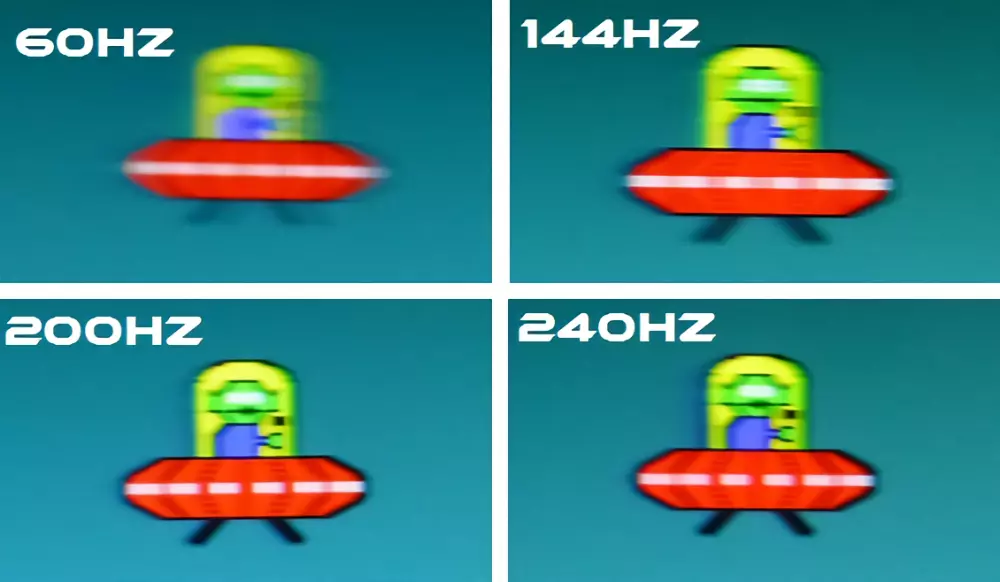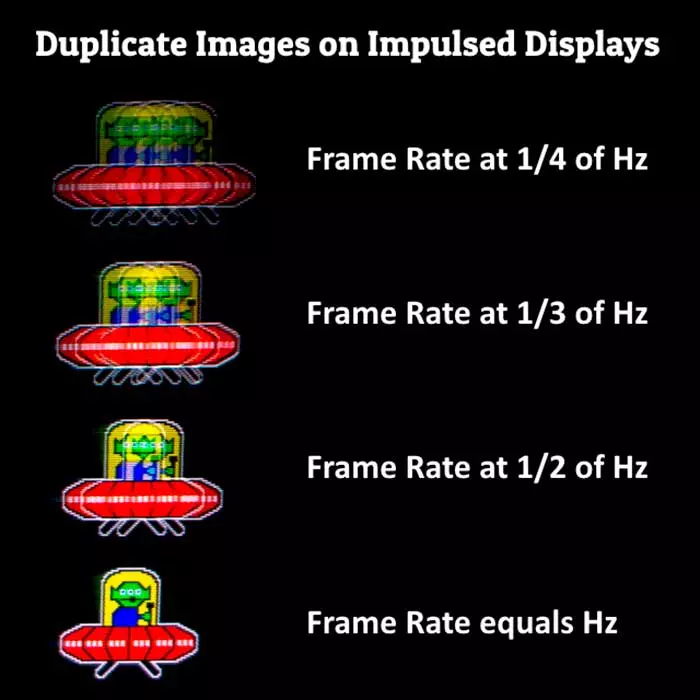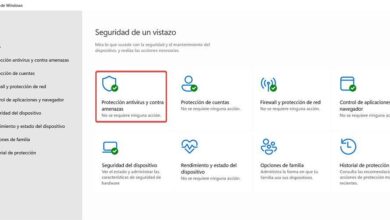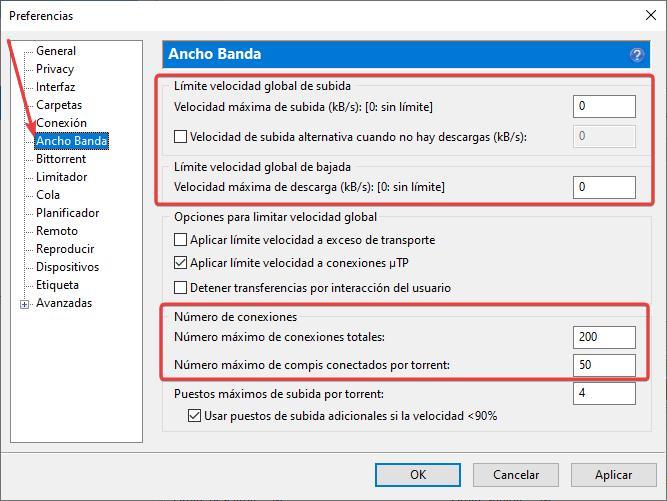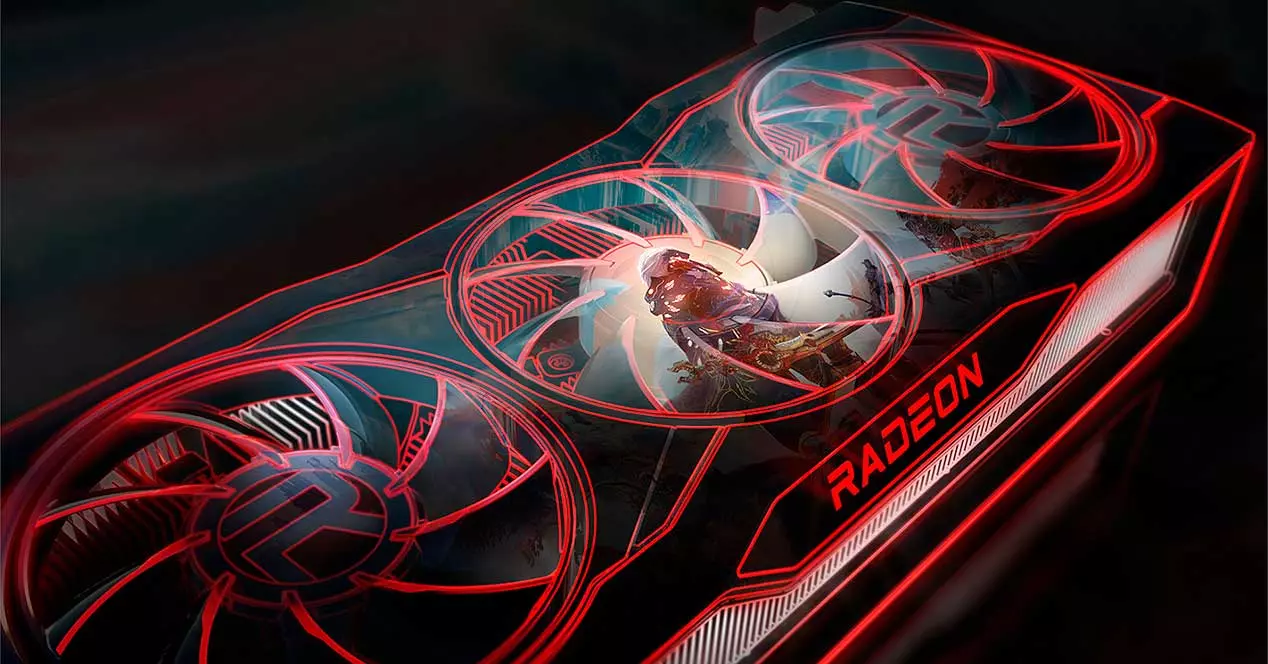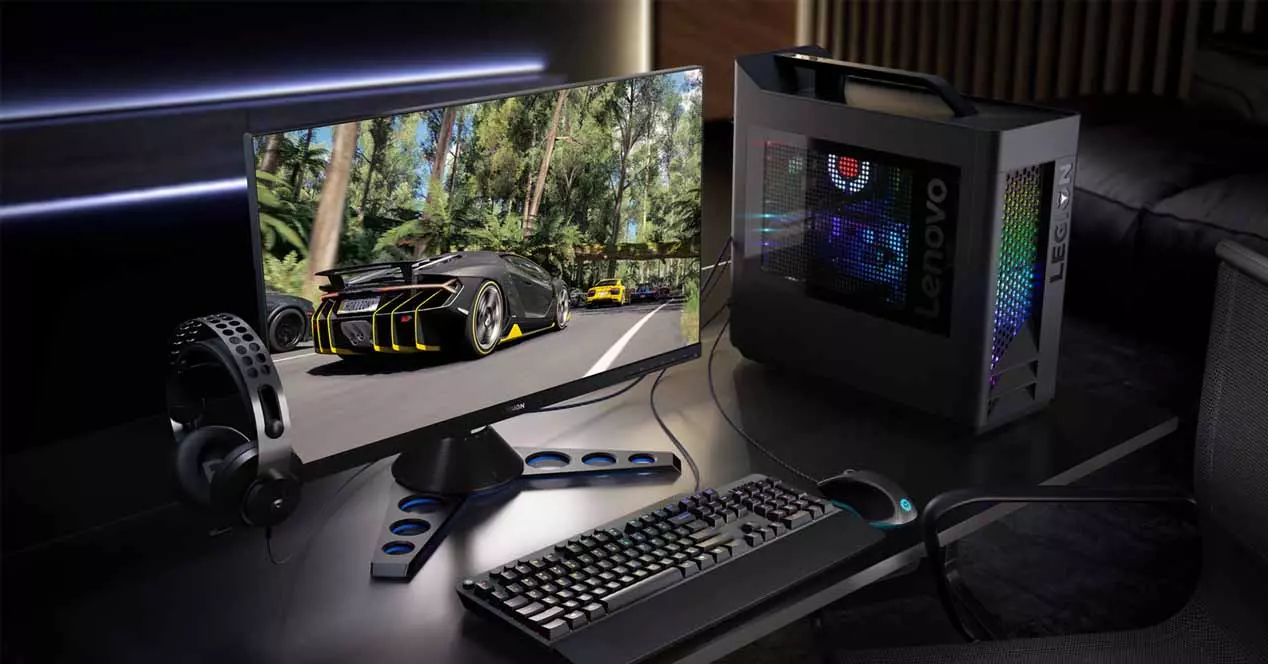
There are many blur reduction technologies, even NVIDIA has its own (LightBoost), but brands and panelists have implemented their own versions over the years. From ULMB, DyAc to the named LightBoost, all seek to improve the blur in gaming.
What is the solution so that motion blur does not occur? Introduce a strobe backlight, where this light must inescapably be synchronized with the monitor’s update cycles to achieve the desired effect. They are not perfect technologies, they only alleviate the problem to a great extent to the point that an effect that seems perfect has been achieved, but technically it is not as such.
What is strobe crosstalk?
Activating a motion blur mode to alleviate it results in the so-called Strobe Crosstalk and this is nothing more than a duplication of the image. This effect is not the same on all monitors or on all panels, not even at all refresh rates of the same monitor.
The effect varies depending on the conditions and is caused by multiple problems with introducing the strobe light for motion blur. What we can see on the screen is an image duplicated several times on both sides of it (in the worst case), a kind of trail of the image if the monitor manages to alleviate the effect and practically a perfectly clear image if the crosstalk strobe is very mild.
Now that we understand what it is and what it generates in the monitor, we need to understand the causes that produce it, because there are several and which are more diverse:
- GtG pixel response time limitation.
- A different time in the refresh cycles of the panel in front of the backlight.
- The speed with which the panel scans.
All these effects promote crosstalk to a greater or lesser extent and have to be treated separately to understand where the problem is and to be able to alleviate it. Likewise, and as we will see later, there are other factors to take into account such as the maximum frequency of the panel in terms of hertz and its temperature.
Response time limitation
Here you have to put two completely different factors on the table: GtG and the time for the panel to update. The first is the time it takes for a panel and specifically its pixels to switch between two different colors, while the second is the general update time of the panel for all its pixels.
That is, changing color and presenting a new frame in one pixel has nothing to do with it. Therefore, the GtG time must be faster than the global update time of the panel, because if this does not occur then we will have a delay that will produce Strobe Crosstalk. One way to alleviate this is to adjust the monitor (if available) the Overdrive.
We don’t have to fall into the fact that higher Overdrive is better, because then we can produce more strobe crosstalk, which would be a serious mistake.
Different times between the panel and the strobe light
This is normally impossible to remedy except on some specific monitors that do have a specific setting in their menu. The panel time is non-negotiable, but the strobe time can be modified in a few milliseconds, but the manufacturer has to put the facilities described above.
Otherwise it is impossible, but it still affects the strobe crosstalk and nothing can be done.
Best scan-out
The speed of the call scan-out It is also important, since if the panel scans faster, there is a longer time for the GtG, so that the color transition takes longer and does not overlap with the dark period of the strobe light, causing the double image. named above.
Many manufacturers integrate a speed higher than normal, even the scan frequency of the GPU and its cable, almost completely eliminating this effect. This is also tied to the refresh rate of the panel, where lowering the Hz on the monitor gives more time to perform the process and thus lower crosstalk.
Temperature is another determining factor, since fewer degrees imply more response time of the monitor pixels, which also causes the effect when we have an active motion blur technology.
Last but not least, there is a consideration that we must take into account and that not everyone knows. It does not have to do with the hardware or the technology itself but with our eyes, and that is that some players see double the images and may come to think that they suffer from strobe crosstalk.
This effect is clearer when the player is playing very fast games, but it is also produced with slower games and especially when reading text. Is the call keratoconus, a deformation of the cornea that, because it is thinner, ends up protruding and slightly taking the shape of a cone.
This logically occurs at all times, but as it is progressive, many players do not realize it and attribute the problems to things such as myopia, astigmatism, contact lenses, glasses and others. The effect is similar to strobe crosstalk, only if we also suffer from it on the monitor then the game becomes unplayable and dizzy.
